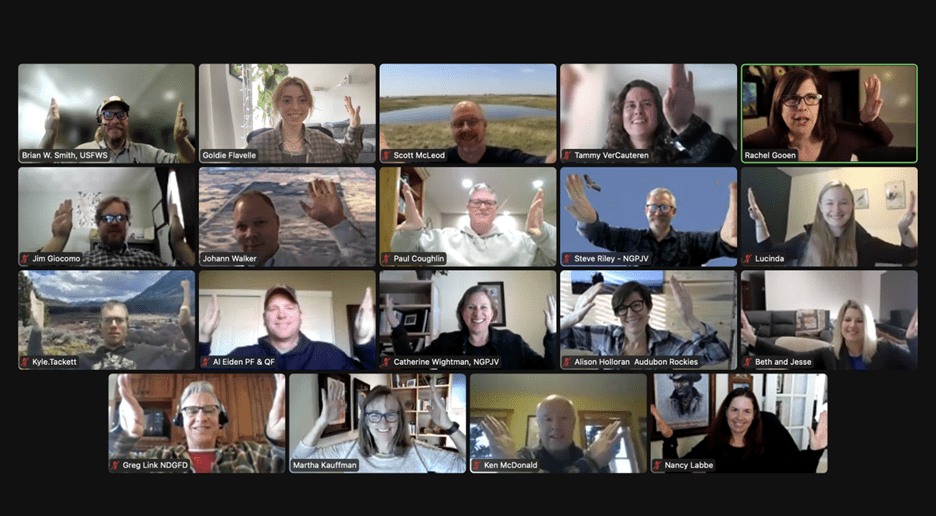Spring is a time of renewal and fresh growth. Keeping with the season, the Northern Great Plains Joint Venture (NGPJV) is poised to renew and grow our commitment to grasslands with fresh capacity and direction. The NGPJV Management Board and staff recently participated in a strategic retreat to define our path forward as a coalition. We emerged from that work rallying around a shared vision of resilient grasslands.
Our partnership consists of people who live, work, and play in the Northern Great Plains and who are concerned about the ongoing loss of our grassland resources and simultaneous declines in grassland bird populations. While approximately 70% of the grasslands in the Northern Great Plains are intact, grasslands loss is ongoing at a rate of 0.45% per year. Loss of native grasslands to development, invasive species, or conversion to cropland leads to a loss of rangeland for cattle and wildlife. Plowing also releases stored carbon in soils, contributing to climate change.
Grassland bird populations have declined by 53% since 1970, with some species declining by as much as 84%, such as the Chestnut-collared Longspur. Many grassland birds nest and raise their young in the Northern Great Plains; the region is therefore critical to the long-term persistence of these species. “The Northern Great Plains boasts some of the most intact grasslands on the continent. It also hosts the breeding habitat for 6 of the most imperiled grassland birds,” says Tammy VerCauteren, Executive Director of Bird Conservancy of the Rockies and co-chair of the NGPJV’s Management Board.
Our philosophy is that we can help build resilient grasslands and sustainable bird populations by supporting the people who are working to retain, enhance, restore, and protect native grasslands. Intact, native grasslands are inherently resilient, which is important because outside influences such as drought, flooding, invasive species, changing commodity markets, and government policies will continue to shape the region and influence local conditions.
“Our shared vision of resilient grasslands means we are working across fences, on public, private, and tribal lands, to ensure our systems and communities have the flexibility to withstand and recover from unpredictable change,” says Brian Smith, Deputy Assistant Regional Director for Migratory Birds & Science Applications for the U.S. Fish and Wildlife Service and NGPJV Management Board member.
Staff capacity at the NGPJV has tripled over the last two years. With our partners, we are collaborating on science and planning tools and connecting field staff with technical information. We are expanding financial assistance options for private landowners in the region through our N-GRIP program and leading habitat project collaborations. We are helping to expand field capacity hosted by our producer collaboratives and NGO partners. We have refreshed our website and Facebook page, initiated an e-newsletter, and will be growing our information sharing capabilities. We are also attuned to regional and national policies that can influence our partners and region and are engaging with larger scale initiatives to leverage regional efforts in support of resilient grasslands.
VerCauteren summarizes our collective work, “Our guiding light is resilient grasslands, and we are building our partnership to effectively ensure our region meets the critical breeding habitat requirements [for declining grassland birds] while also ensuring strong rural communities. Our work is key for a sustainable climate for the future and keeping grass, grass side up.”

